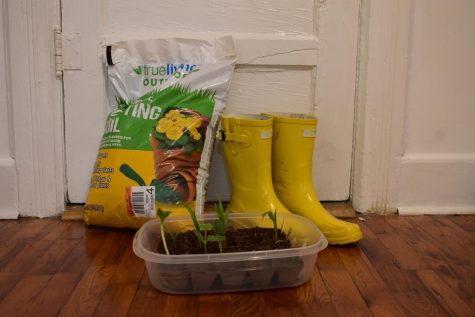Historia Del Queso
February 7, 2020
If you have been following along on my rollercoaster of cheese possibilities, I would like to welcome you back to another. However, this particular writing isn’t going to consist of me ranting about how the cheese tastes like foot fungus or even how it tastes heavenly. Today, we talk about the very intriguing history of cheese. So intriguing that states went into war over it!
We start our journey way back into eight-thousand B.C and focus on the interesting farmers of Poland. During that time, people could not digest the sugar we commonly associate as lactose. So, this means that these people could not gain the bacterial benefactions of milk. These farmers likely gained the knowledge of developing cheese from transportation and storage of milk in the bladders of certain mammals. This is theorized because records from the nearby civilization of Turkey referenced rennet. Rennet is an animal byproduct, produced in the stomachs of certain mammals, that can accelerate and control coagulation.
With cheese being discovered, these farmers could now gain all of the advantages of milk without the harsh lactose being included.
We now fast forward to the end of the bronze age. Cheese was now a standard commodity in maritime trade throughout the eastern mediterranean. During this era, cheese became so popular that there were a variety of recipes being made for anything from rituals to certain populations.
Different civilizations were using this knowledge to create different variations of cheese. For example, Nomadic Mongolians were using Yak’s milk to create hard sun-dried wedges of Byaslag. Whereas, Egyptians were enjoying goat milk to make cottage cheese. Greeks enjoyed solid bricks of salty brined feta cheese alongside a harder variety similar to today’s Pecorino Romano (we all know how that one tastes).
Under the Romans, dry cheeses became an essential ration for the nearly five thousand soldiers guarding the border of the Roman empire. When the western part of the Roman empire fell, the Benedictine monasteries continued to experiment with different types of milks and eventually created some popular favorites, which include Parmesan, Roquefort, Munster, and several swiss flavors.
By the end of the fourteenth century, Alpine cheese from the Gruyere region of Switzerland became so profitable that a neighboring state invaded the Gruyere highlands and took control of this growing profit. Gruyere continued to be very popular and profitable to the modern day century and is commonly used for its flavor and melting possibilities in many fondues.
Cheese is such a big market that in today’s industries, we produce twenty-two billion kilograms of cheese a year. To put that amount in perspective, 1 billion kg is approximately 1 million tons. A couple of skyscrapers would weigh about that much. So twenty-two billion kilograms would mean the world combined produces almost 44 skyscrapers worth of cheese each year.
With twenty-two billion kilograms of cheese on your mind, I’d like to leave off on a high note. So, as always, stay cheesy my friends.










